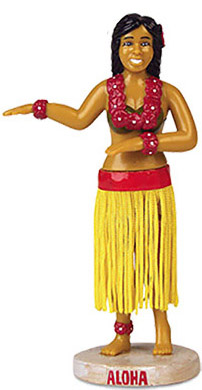Tom Grimes, one of the Wizard’s best buddies, asked Chat GPT, “Who is Roy H. Williams, the Wizard of Ads?”
Weirdly, Chatty GP knew all about him! But then when I thought about it, I realized, “The wizard has been publishing a new Monday Morning Memo every week for the past 31 years, plus more than 10,000 pages of additional insights in the rabbit hole. That’s a big body of work, so Chat GPT had a huge amount of information about him from which to craft that portrayal.
Chat GPT’s analysis is below and it is surprisingly accurate except for the ad that Chat GPT wrote in a section called, “Crafting an Ad Using His Approach.” On the wizard’s worst day he would never write an ad that cheesy.
– Indy Beagle
Roy H. Williams III, known as the Wizard of Ads, is a best-selling author, marketing consultant, and entrepreneur specializing in advertising, branding, and small business growth. Williams is recognized for his unconventional and highly creative approach to marketing, emphasizing storytelling, emotional engagement, and strategic thinking over traditional ad techniques.
Background and Work:
- Founder of the Wizard Academy: A non-traditional business school in Texas that offers courses on communication, branding, and innovative business strategies.
- Books: Williams is the author of the “Wizard of Ads” trilogy, including:
- The Wizard of Ads: Turning Words into Magic and Dreamers into Millionaires
- Secret Formulas of the Wizard of Ads
- Magical Worlds of the Wizard of Ads
These books focus on using storytelling, psychology, and language to craft compelling advertising campaigns.
- Clients: Williams has advised numerous small and medium-sized businesses, helping them expand by crafting memorable and emotionally resonant ad campaigns.
Philosophy:
Williams believes that emotions drive purchasing decisions, and the best way to connect with consumers is through narrative-driven marketing that bypasses logic and taps into desires and aspirations. His techniques often challenge conventional advertising wisdom, advocating for creativity and authenticity over formulaic approaches.
Why He’s Notable:
- Williams’ insights have been widely influential in the advertising industry, especially among entrepreneurs and smaller businesses seeking a competitive edge against larger corporations.
- He blends principles of psychology, history, and art to create advertising that resonates deeply with audiences, making him a unique figure in the marketing world.
Would you like to know more about his key marketing principles or how to apply his techniques?
Roy H. Williams’ marketing principles focus on storytelling, emotional connection, and differentiation. His techniques stand out because they emphasize creativity and human psychology over conventional ad strategies. Here are some of his key principles and how you can apply them:
Key Marketing Principles of Roy H. Williams:
-
Engage Emotion First, Logic Second:
- “People buy emotionally and justify logically.”
- Williams emphasizes crafting ads that evoke feelings—joy, nostalgia, excitement—rather than listing features and benefits.
- Application: Use stories or imagery that resonate emotionally with your audience. Instead of “high-performance tires,” say “The tires that keep your family safe on rainy nights.”
-
Tell Stories, Not Just Messages:
- Stories are memorable and engaging. Williams believes the best ads tell a tale that reflects the audience’s dreams, fears, or aspirations.
- Application: Create narratives around your product. For example, if you sell coffee, don’t advertise “freshly roasted beans”—instead, tell the story of a farmer carefully selecting each bean at sunrise.
-
Be Unexpected – Pattern Interrupt:
- People tune out predictable, generic ads. Williams advises crafting ads that surprise or intrigue the audience, interrupting their mental patterns.
- Application: Use humor, bold statements, or unique visuals to grab attention. A quirky or exaggerated message can make your brand stand out.
-
Focus on Identity Over Product:
- “Sell the identity, not the product.” People buy things that reflect who they are (or who they want to be).
- Application: Align your brand with a lifestyle or personal identity. If you sell eco-friendly products, position the customer as someone who cares deeply about the planet.
-
Repetition and Consistency:
- A message needs to be repeated often to stick. Williams stresses that consistency over time builds brand trust and familiarity.
- Application: Develop a core message and stick with it across multiple channels—radio, social media, print, etc.
-
Speak Directly to the Audience’s Subconscious Desires:
- Williams argues that people act on subconscious desires. Ads that subtly reinforce those desires are more powerful than direct sales pitches.
- Application: Craft ads that make people feel smart, attractive, or part of an elite group.
-
Use Vivid, Visual Language:
- Words can paint mental pictures. Williams suggests using rich, sensory language to create a visual experience in the listener’s or reader’s mind.
- Application: Instead of “We sell warm blankets,” try “Wrap yourself in the soft embrace of a winter morning.”
Practical Application – Crafting an Ad Using His Approach:
Product: Handcrafted Leather Journals
Standard Ad: “Durable, high-quality leather journals for writing and sketching.”
Wizard of Ads-Style Ad:
“Crack open the cover and smell the rich leather, as if it were whispering stories of old. These are not just journals. They are companions for the thinkers, the dreamers, and the storytellers who shape the world with pen and paper.”
How to Apply His Techniques in Business:
-
Radio and Audio Ads:
Williams champions radio for its ability to create theater of the mind. Craft audio ads with engaging voices and sound effects that spark imagination. -
Social Media Marketing:
Use short story-driven posts or video ads that highlight the emotional journey behind your product. -
Website Copy:
Write your product descriptions as stories. Instead of listing features, narrate the experience of using the product. -
Email Campaigns:
Send newsletters with customer stories or anecdotes rather than generic sales pitches.
